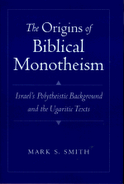William Lane Craig in his debates with Bart Ehrman and James Crossley, and probably other presentations, as well, offered something he called "probability calculus," where he argues against ruling out the Resurrection of Jesus based on its inherent improbability. I would like to break down this probability, which Craig touts as if it were some kind of helpful information. Bart Ehrman, who I assume has little if any education in probability and statistics, was not able to refute Craig in detail, instead dismissing the argument, saying, "mathematics is simply irrelevant" in the context of the Resurrection. And he's absolutely right. But that isn't a very satisfying refutation, is it?
Before we get into this further, I should note that despite Craig's terming this as "calculus," we really aren't doing anything more than basic algebra in our calculations. In other words, anyone with a high school degree should be able to follow along just fine as I go through this.
Also, it may help to see the video where Craig presents his "calculus" (beginning at time 2:45):
http://www.youtube.com/watch?v=aUMsCKlIBAo
Craig gives us this little equation:

Craig's notation here is a little unusual, so let's convert it to something a bit more conventional:

...where "S" stands for our background scientific knowledge, "R" stands for the Resurrection, and "E" stands for the specific evidence we have in the way of ancient testimony, Scripture, knowledge of first-century Jewish culture, etc. Please note that "¬" means "not."
Now, in order for something to be probable, it must have a probability value of greater than 0.5. So:

Plug that into our original equation:

Now let's make an equivalent substitution. Basic probability theory tells us that:

Hats off to hatsoff for his post on the subject. |














0 comments:
Post a Comment